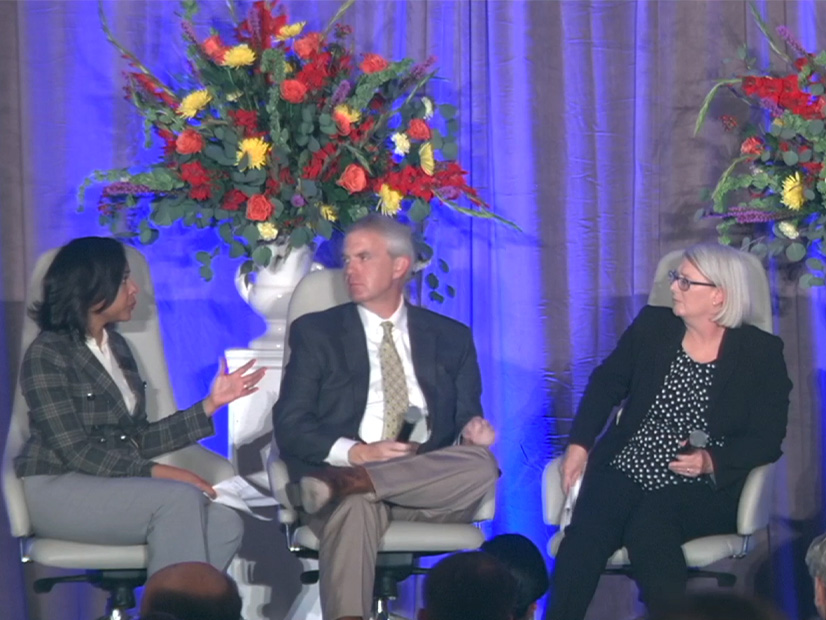
The COVID-19 pandemic has been both an important test of regulated utilities’ emergency mechanisms and a lesson in the importance of early preparedness, members of the National Association of Regulated Utility Commissioners’ Emergency Preparedness, Recovery and Resiliency (EPRR) Task Force said at the organization’s annual meeting on Monday.
“I think it’s amazing how resilient all of the state commissions were, in how they pretty much turned on a dime. The staff, and particularly our IT staff, deserve an amazing kudos for everything they did to keep us going and get us all virtual,” said Washington Utilities and Transportation Commissioner Ann Rendahl, chair of the task force’s Subcommittee on COVID-19. “But without the prior planning, you can’t have that full response.”
Report Focuses on Industry Response
Rendahl’s presentation included highlights of a report issued by NARUC last month on “Lessons Learned from the Ongoing Response to the COVID-19 Crisis.” Her subcommittee compiled the report with input from commissioners from 13 states; stakeholders from the electricity, natural gas, water and telecommunications industries, as well as generator manufacturers; the Department of Energy; and consumer advocates.
The report examines the response of utilities, suppliers and regulators on multiple issues, including implementing remote workforce postures and cybersecurity protections; public policy, such as disconnection moratoria and aid for vulnerable populations; and acquiring protective equipment.
However, Rendahl placed the greatest emphasis on the recommendations that state utility commissions “update their emergency preparedness plans to include a comprehensive pandemic response,” reminding attendees that this attitude will help in any future emergency situations.
“I would encourage all of you … [to] go back and look at [your emergency planning] … and see if you can think about all the different places where maybe you might need … some future planning for how we might address a similar long-term situation where you’re not all in the office,” Rendahl said. “Or it might be you don’t have a cyber element to your plan, or you’re not fully prepared for some significant weather event.”
Pennsylvania Public Utility Commissioner Gladys Brown Dutrieuille, chair of the EPRR Task Force’s Black Sky Subcommittee, said this view applied equally to her group, which is responsible for developing resources to support NARUC members in the event of a catastrophic, multiregional event affecting multiple critical infrastructure sectors. Citing the example of Puerto Rico’s mass outages following Hurricane Maria in 2017, she urged regulators to reach out proactively to federal and state officials, as well as utilities, to ensure a smooth chain of command in a crisis.
“You don’t want to start handing out your business cards on a tarmac when you’re meeting the people [coming] in to help you deal with the event,” Dutrieuille said. “You want to know those people in advance; you want to know who you can call … to be prepared for all this. … You don’t plan for a black sky event in the middle of the response.”
Task Force Publishes Federal Funding Guidebook
Task force members also plugged the Federal Funding Opportunities Guidebook, issued this week in response to the passage of the Infrastructure Investment and Jobs Act on Friday. (See Energy Groups Quick to Praise Infrastructure Bill Passage.) The guidebook is intended to help state commissioners identify and prioritize programs that are eligible for funding from the $1.2 trillion in the bill.
The task force’s Federal Funding Opportunities and Construction Standards Subcommittee produced the guidebook. Mississippi Public Service Commissioner Brandon Presley, chair of the subcommittee, said that he expects the work of parsing the bill’s language and determining its long-term implications to be an ongoing effort.
“Mainly the focus of our subcommittee has been on, what are those pots of dollars that … can be drawn upon for this effort?” Presley said. “All of that changed Friday night when the infrastructure bill passed … but I think our work will continue, in at least updating our guidebook on the different elements that are in the infrastructure bill.”


